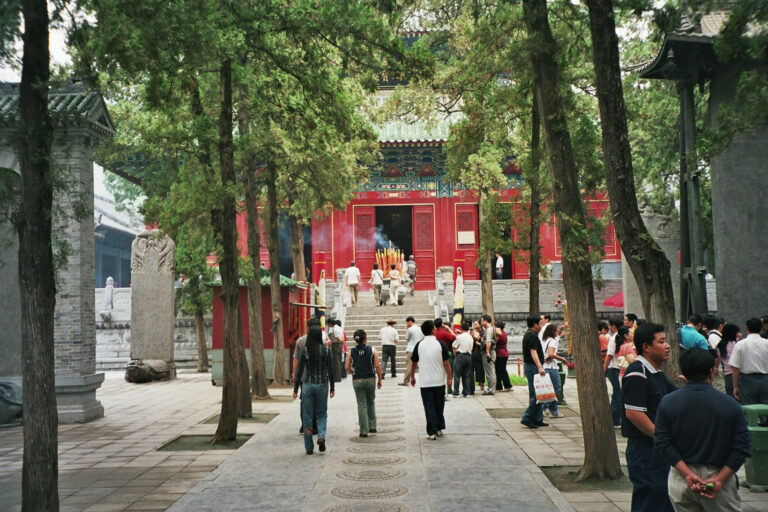Travel Tips
Countries with Visa Exemptions
Country List of Mutual Visa Exemption
Africa: Mauritius, Seychelles
America: Antigua and Barbuda, The Bahamas, Barbados, Dominica, Ecuador, Grenada, Suriname
Asia: Armenia, Azerbaijan, Georgia, Kazakhstan, Maldives, Qatar, Singapore, Thailand, United Arab Emirates
Europe: Albania, Belarus, Bosnia and Herzegovina, Moldova, San Marino, Serbia
Oceania: Fiji, Tonga
Nationalities with ordinary passport on above list are entitled to enter China for 15 to 30 days without a visa.
Country List of 15 Days Visa Exemption till 31 December 2025
Asia: Brunei, Japan, Malaysia, South Korea
Europe: Andorra, Austria, Belgium, Cyprus, Finland, France, Germany, Greece, Hungary, Iceland, Ireland, Italy, Liechtenstein, Luxembourg, Monaco, Netherlands, Norway, Poland, Portugal, Slovakia, Slovenia, Spain, Switzerland
Oceania: Australia, New Zealand, Solomon Islands
Nationalities with ordinary passport on above list are entitled to enter China for 15 days without visa until 31 December 2025.
APEC Business Card
If you hold an APEC Business Card who from Japan, Russia, Philippines, Vietnam and Indonesia etc., you could visit China without a visa.
International Flight Network of Zhengzhou Airport
Hong Kong, Taipei, Tokyo, Seoul, Jeju, Cheongju, Phnom Penh, Singapore, Bangkok, Phuket, Kuala Lumpur, Nha Trang, Helsinki, Sydney, Milan, Londun, Luxembourg.
Ho Chi Minh and Osaka will be connected in 2025.
As the policy may change for Chinese Visa of Foreigners, please visit the Chinese Embassy website for latest information.
You can also visit Chinese Ministry of Foreign Affairs for more information.
Required Documents for an Academic Exchange Visa:
- Family Name
- Given Name
- Gender
- Date of Birth
- Nationality
- Passport Number
- Your name as it appears on your passport
- Date of Arrival
- Date of Departure
- Occupation
- Highest educational level
- Employer
- Employer Address
- Title of presentation (if any)
- Your bio
- Photo of passport
- Resume or CV
Visa Application Online:
There are two websites where you can apply for a visa to China. Every nationality which has a formal diplomatic relationship with China can apply for a visa by logging on to China Online Visa Application (COVA): https://cova.mfa.gov.cn/qzCoCommonController.do?show&pageId=index&locale=en_US
You need to select your continent, country and city, and the website will jump to the page for your application process. For countries like the United States, the applicant will stay on COVA for the application process. After completing the COVA forms as required, please make sure to print the full set of COVA forms (8-9 pages) and sign on the Confirmation Page and the 8th page.
For countries like India, Philippines and Vietnam, the applicant will be linked to the Chinese Visa Application Service Center. If you prefer to skip this step, you could use this link for direct application: https://www.visaforchina.cn/globle/
When making travel plans in Zhengzhou, we recommend using Trip.com. The information is more accurate for China than other travel websites. When using Trip,com, be sure to find the “Location” filter, “show all 20,” then select Zhengzhou University which is northeast of the city next to the west 4th Ring Road.
The two recommended hotels are the Huazhi Hotel (called Hauwise Hotel in Trip.com) and the Madison Hotel (called Zhengzhou University Meilun Hotel in Trip.com). The map below shows the distances between our location on campus and these hotels.
Registration will be held at the Hauzhi Hotel. A shuttle will be available to take us to the conference location and back. Please note that you must have a university pass in order to enter the university campus, which you will receive when you register. It is easier to get through the gate if you are on the shuttle. Please arrive early enough to register and take a 15 minute shuttle ride.
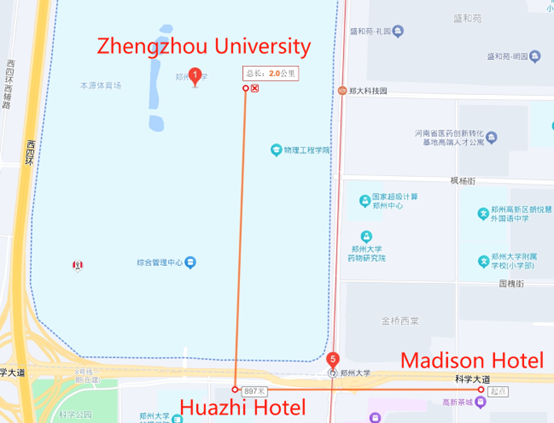
Huazhi Hotel华智酒店 is the flagship hotel of Huawise Hotels & Resorts. The facility and service standard equals to five star Hotel. The hotel provides free gym, pool and Laundromat for all guests.
Address: No. 97, Kexue Avenue, Zhongyuan District, Zhengzhou
地址:郑州市中原区科学大道97号
Room Rate: RMB 380 ($55 USD) / per night for 2 guests and includes 2 breakfasts.
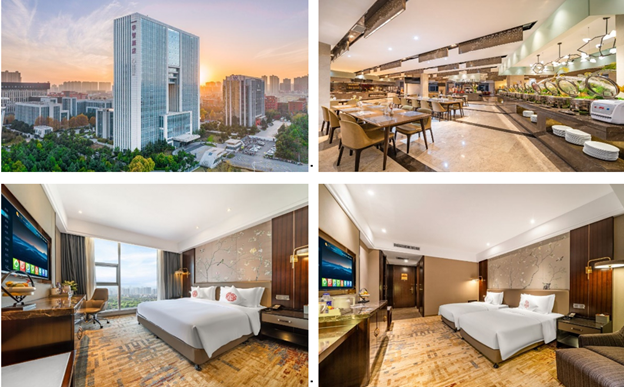
Madison Hotel – Zhengzhou University
Address: Building 6, Waliuxin Village, 100m southeast from the cross of Kexue Avenue and Chunteng Road, Zhongyuan District, Zhengzhou
地址:郑州中原区科学大道与春藤路交叉口东南100米洼刘新村6号楼
Room Rate: RMB 320 ($45) / per night for 2 guests and includes 2 breakfasts.
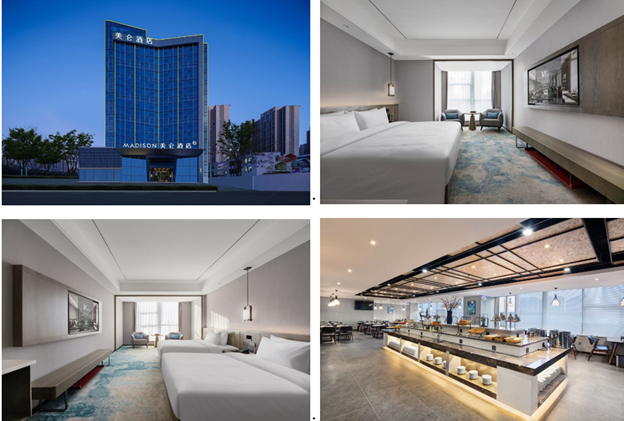
There are several other nearby hotels and attendees are welcome to choose any hotel they wish.
Tourist Information
This YouTube video provides an excellent introduction to travel in China: https://youtu.be/xfKnJR3pHTM?si=P4H5ES_xGRRXkeZi
China is primarily a cashless and cardless economy, with the vast majority of shoppers using their phones (digital wallets) to pay for items in person and online. Cash is rarely used. Digital wallets WeChat Pay and Alipay are China’s two most popular payment methods, accounting for more than 90 per cent of the mobile payments market. To prepare for your trip, please set yourself up in one of the common payment systems. For more information: https://www.traveloka.com/en-en/explore/destination/how-to-pay-in-china-trp/374561
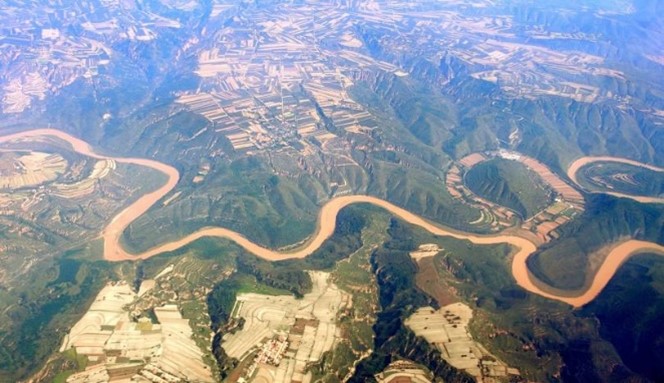
The Yellow River, or Huang He, is the second largest river in China and is historically significant as the birthplace of ancient Chinese civilization. The Yellow River get its name from the silt it carries, which gives the waters a yellow-brown colour. Although the river helps create fertile land suitable for farming and is vital to the development of Chinese civilization, but it also frequently overflows before the construction of the dams, resulting in disastrous, extensive flooding. For this reason, the existence of this river is uniquely considered as both a blessing and curse throughout history, as it has been nicknamed both “China’s Pride” and China’s Sorrow”.
The Yellow River descends from Gyaring Lake in the high plains of Tibet, with the estimate length of 5,464 km and an altitude of 4,293 metres. This vast and magnificent river flows through the entire area of the Henan Province, including Zhengzhou city where our conference will take place. To see this river up close, you can visit the Yellow River Scenic Area located in northwest Zhengzhou, which faces the Yellow River to the north and the Yue Mountain to the south. Read here for more Information about the Yellow River Scenic Areas: Zhengzhou Yellow River Scenic Area, Huang He, China

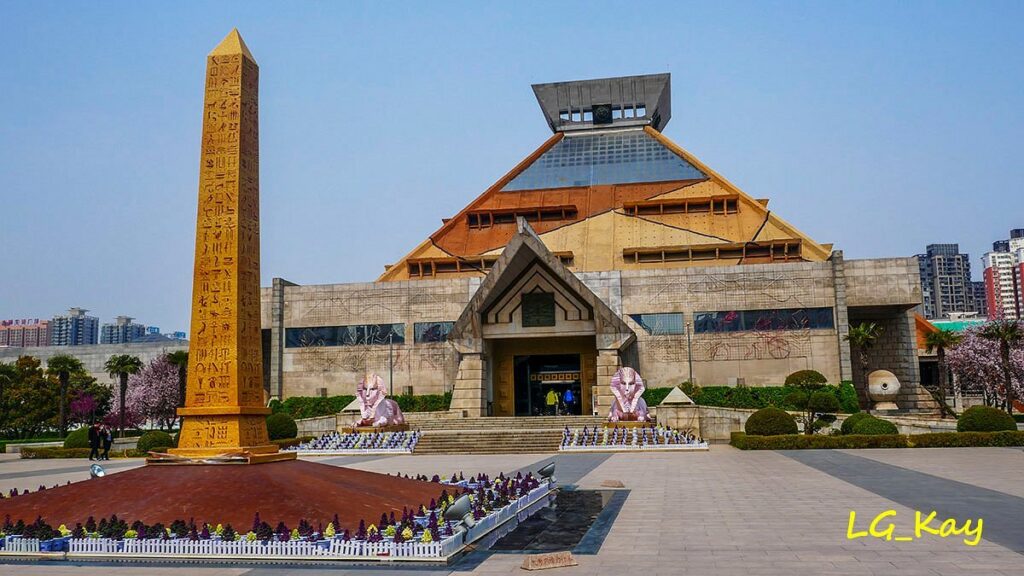
Zhengzhou is a Chinese historical city and also the capital city of the Henan Province situated in the middle of China. In it lies one of the oldest museums in China, the Henan Museum, founded back in 1927. The Henan Museum keeps a comprehensive collection which reflects Chinese history, culture, and art throughout different periods of civilization. More than 170,000 cultural
relics are showcased here, which includes prehistoric relics, bronzes, porcelains and ceramic arts from different dynasties, jade artifacts, and stone carvings with vivid images depicting religious beliefs and ancient society of the Chinese civilization.
The Henan Museum tour is included in our 2025 Conference’s Optional Extra – Henan Museum Tour. If you prefer, you can also visit the Henan Museum on your own schedule. You can get there by using the Subway (around 50 minutes from Zhengzhoudong Railway station), the Bus (around 35-45 minutes from Zhengzhou downtown), or taxi ride (30 minutes from Zhengzhoudong Railway station, 10 minutes from Zhengzhou downtown). Visit the Henan Museum website for more information: https://english.chnmus.net/
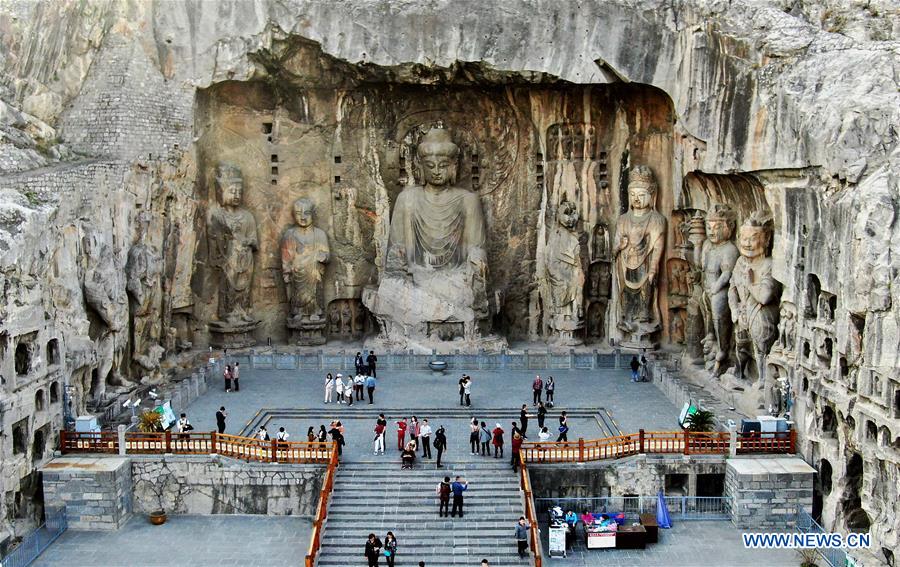
Longmen Grottos is a UNESCO world cultural heritage site as “an outstanding manifestation of human artistic creativity” located in Luoyang, China. It is the world’s biggest Buddhist cave treasury with thousands of stone carvings. The grottoes were carved on the mountain on both sides of Yi River, containing the largest and most impressive collection of Chinese art of the late Northern Wei and Tang Dynasty.
These ancient caves housed thousands of statues and carvings that span over a thousand years of history, commissioned by emperors, aristocrats, and devout Buddhists in their desire to leave a lasting legacy. The sculptures and carvings in Longmen Grottoes are renowned for their
exceptional craftmanship, exhibiting high level of artistic beautify and attention to detail in carving intricate patterns and expressive facial features. Learn more about the Longmen Grottoes as described by UNESCO: https://whc.unesco.org/en/list/1003/.
The trip to Longmen Grottoes is included in our 2025 Conference’s Optional Extras – Longmen-Shaolin All Day Tour. This tour specifically covers Longmen Grottoes and Shaolin Temple, but not other areas around Luoyang city. If you wanted to explore other tourist destination in the area, please make your own reservations.

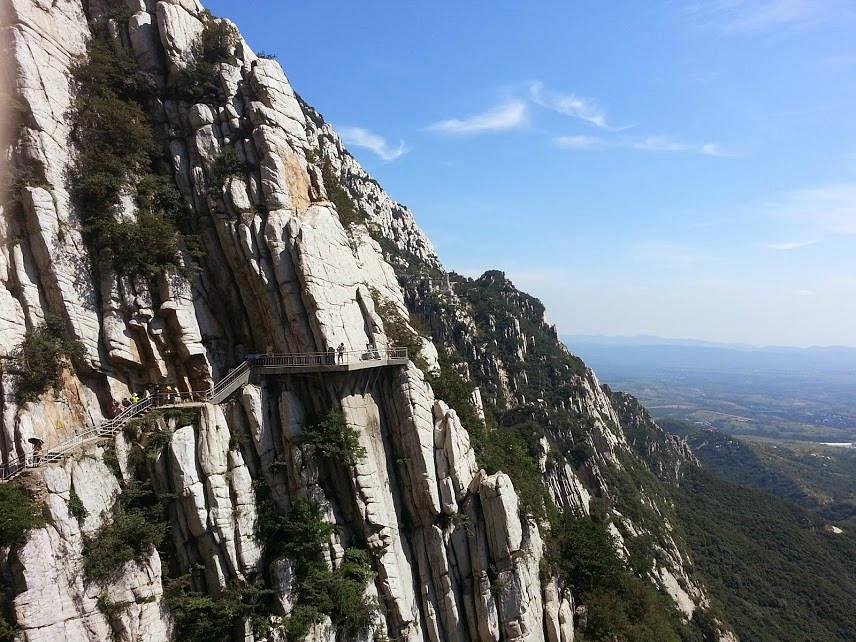
Song Mountain, also known as Zhong Yue (the Middle Mountain), is one of China’s five greatest mountains, located in the west of Henan Province. Covering an area of 450 square kilometers, the Mount Song consists of two ranges, Taishi and Shaoshi mountain, which together have 72 peaks in total. The highest peak, Lian Tian Feng, reaches the height of 1,512 meters. Since approximately 1000 BC, Chinese astronomical mythology has regarded the Mount Song as the “center of Heaven and Earth”, a status revered by the successive dynasties of the Chinese Empire. The Song Mountain has been considered as a sacred place where gods appear and immortals attain enlightenment. Since the Han and Jin dynasties, it has served as an important place for monks to spread Buddhism and Taoism.
Because of its proximity to Luoyang, the ancient capital of nine different dynasties, Mount Song became an essential site for emperors to offer sacrifices to gods and ancestors to crown their heirs, leaving behind a wealth of historical and cultural landmarks. One of the most famous sites to visit in the Song Mountain area is Shaolin Temple, which is part of our Optional Extras tour. Mount Song offers many other tourist attractions as well, but you’ll need to make your own reservations to explore them.
On Shaoshi mountain, you can visit the Shaolin Pagoda Forest, the biggest pagoda forest in China with a collection of over 240 pagoda tombs for distinguished abbots and monks. On Taishi mountain, you can travel to the Luya Waterfall, located underneath the Xuanlian peak, surrounded by steep rock formations. Visit these articles for more information on tours around the Song Mountain: Article 1 by China Discovery. Article 2 by Ruqin China Travel.
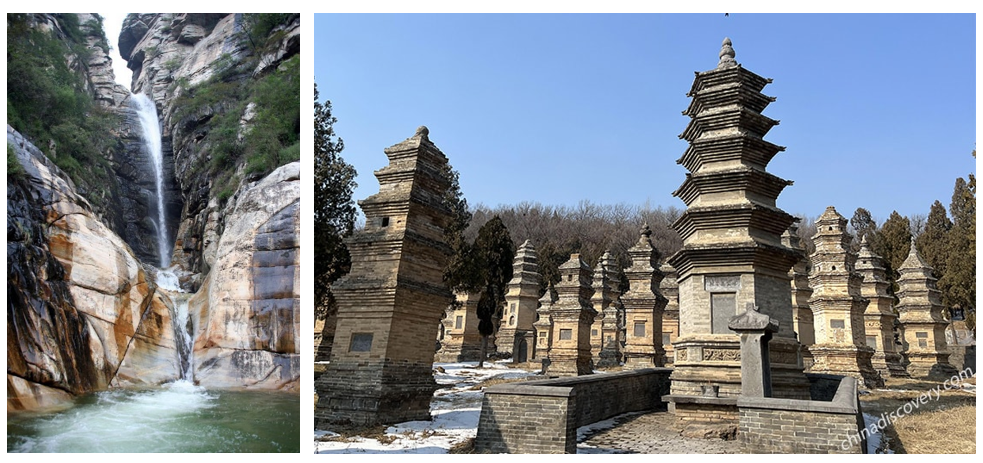
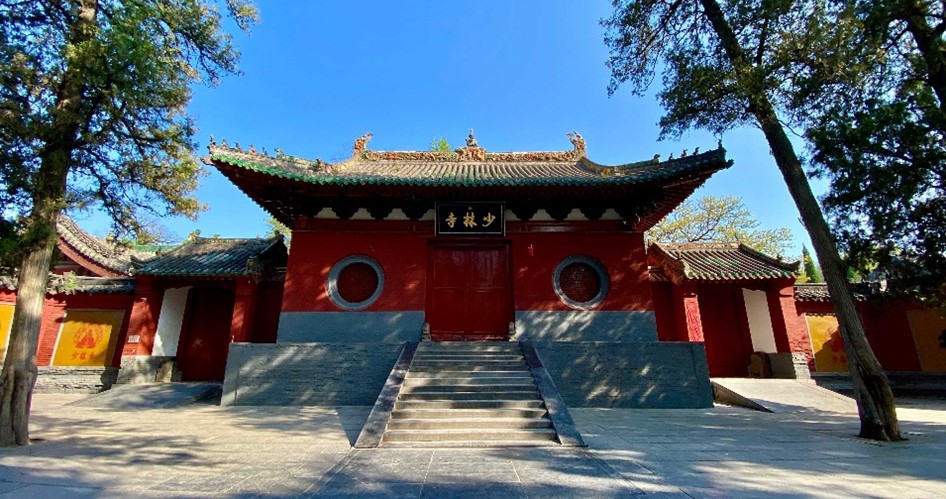
The Shaolin Temple, also known as Monastero Shaolin, is renowned as the birthplace of Shaolin Kung Fu and Zen Buddhism. Nestled in the Songshan mountain range of Henan Province, it is located 72 km southwest of Zhengzhou (the capital of Henan province) and 48 km southeast of Luoyang (the former capital of the Northern Wei Dynasty). The temple’s name derives from the word “Shao,” referring to “Shaoshi” Mountain where the temple is located, and “Lin,” meaning forest in Chinese, thus the temple was named Shaolin for the forest at the foot of Shaoshi mountain.
Around 490 AD, Batuo, a Buddhist monk from India, arrived in China, where he translated Buddhist scriptures into Chinese and trained monks in martial arts. With the support of Emperor Xiaowen of the Northern Wei Dynasty, he established the Shaolin around 495 AD. The Shaolin Temple community
gradually grew to become the center of Chinese Zen Buddhism and known for “Shaolin Kung Fu.” Despite being abandoned and largely destroyed during various wars, including the Cultural Revolution, the monks repeatedly returned and rebuilt the temple in its original style. In recognition of its cultural and historical significance, the Shaolin Temple was designated a national key cultural relic protection unit in 1996 and became a UNESCO World Heritage Site in 2010.
The Shaolin Temple is featured in our 2025 Conference Optional Extras – Longmen-Shaolin All Day Tour, including reservations to enjoy the Zen Shaolin Kung Fu Music Show, the world’s largest outdoor Kung Fu performance. This spectacular show combines wonderful Shaolin Zen rituals profound Buddhist Zen culture, fascinating music with Guzheng (a traditional Chinese instrument) and advanced lighting effects, with nearly 600 performers showcasing Zen and martial arts.
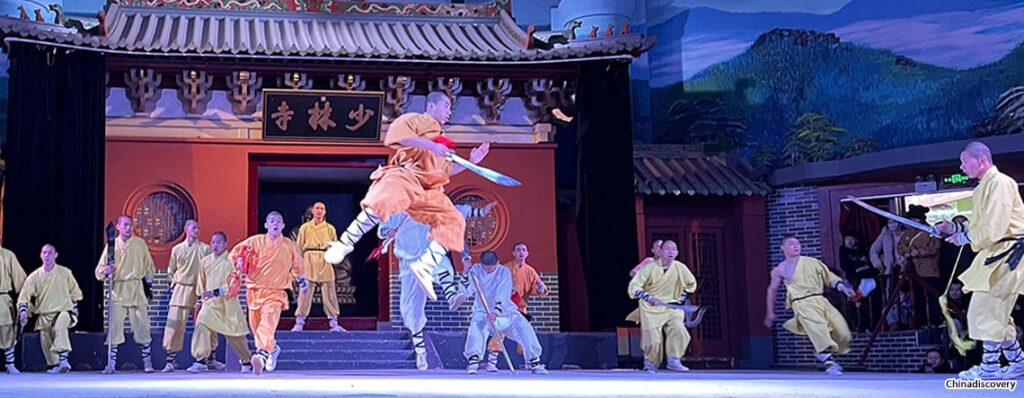
If you find yourself having free time to explore Zhengzhou city, here are some recommended places for you to visit. The locations are inside Zhengzhou city, so you can get there using the subway, bus, or a taxi ride.
Erqi Strike Monument Tower
The Erqi Strike Monument Tower (located in Jiefang Road, Erqi District) is a monument that stands as a tribute to Zhengzhou’s historic workers strike of 1923. Once the tallest building in the city until 1976, this iconic structure rises 63 meters high with 14 floors. From the 3rd to the 10th floor, visitors can explore fascinating exhibition halls featuring historical relics, pictures and documents that recount the railway workers’ protest back on February 7th, 1923. The tower is also a symbol to commemorate the death of these martyrs. Located in the center of Zhengzhou city, the tower is easily visible on your way to Zhengzhou University where the conference is held. You can enjoy free entry by showing your passport during daytime hours. Enjoy the remarkable landmark that connects the city’s past with its vibrant present.
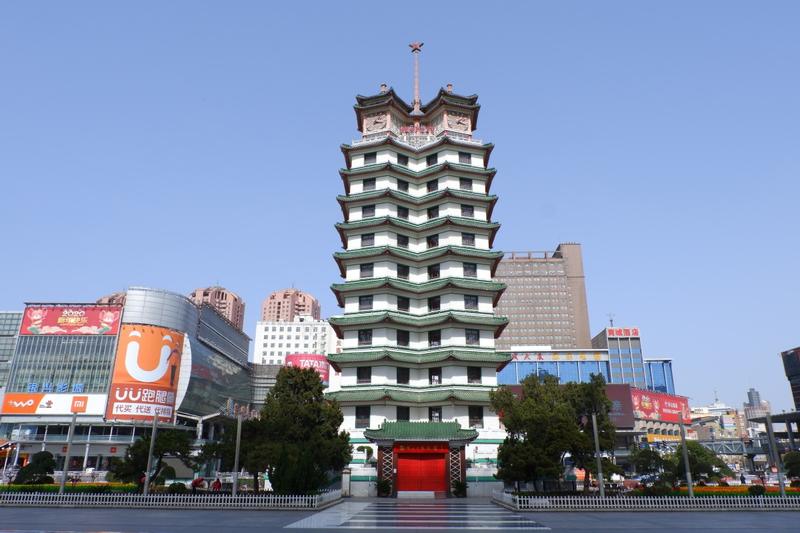
Dehua Pedastrian Street
Dehua Pedastrian Street (also known as Dehua BuXing ShangYeJie, located near the Erqi Strike Monument Tower) is a bustling pedestrian street similar to those of major China cities. The street is lined with shopping malls and department stores offering a mix of international and local brands, along with an array of fast food, food stall vendors serving delicious local snacks. In the evening, you can enjoy the beautifully lit buildings with the Erqi Strike Monument Tower as the stunning centerpiece. It’s a great place to visit if you enjoy shopping and exploring the local culinary.
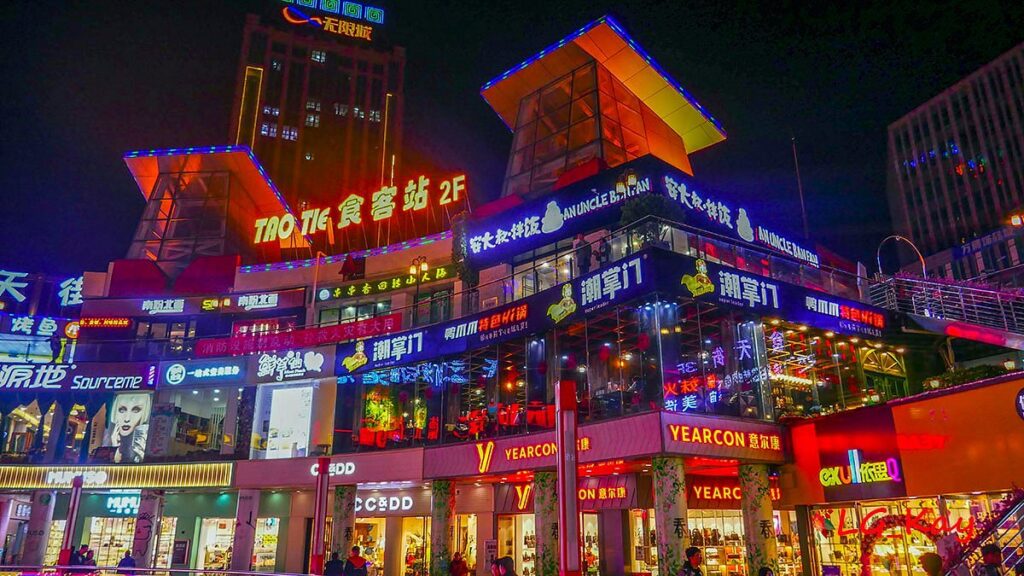
Zhengzhou Town’s God Temple
Zhengzhou Town’s God Temple (located in north of Zhangcheng road, Guancheng Hui Nationality District) offers a fascinating glimpse into the region’s traditional religious and cultural heritage. Also known as the Zhengzhou Confucian Temple, it was originally built during the early Ming Dynasty and later rebuilt in 1951. Although modest in size, the temple boasts beautiful halls, temples, and gates that provides a serene charm. Unlike busier tourist spots, this temple is typically quiet and uncrowded, making it an ideal destination for those who enjoy peaceful stroll in a calm atmosphere while learning about Zhengzhou’s history and tradition.
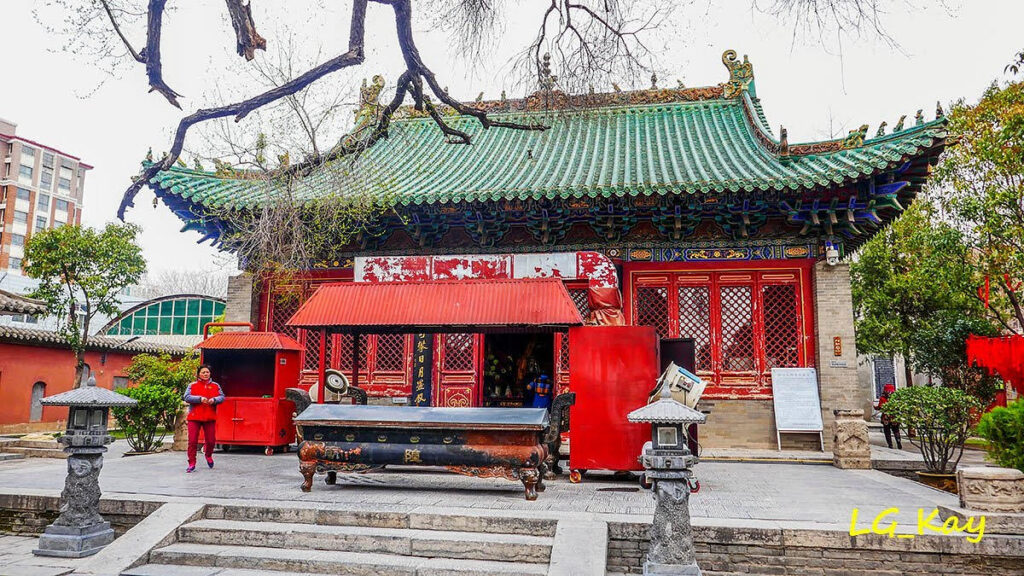
If you’re extending your stay in China, consider visiting Luoyang, a neighboring city of Zhengzhou. Luoyang is the ancient capital of central China’s Henan province during multiple dynasties, making the city rich in historical attractions for tourists, including the famous Longmen Grottoes explained in the previous article. Here are more destinations to explore in this historic city.
White Horse Temple
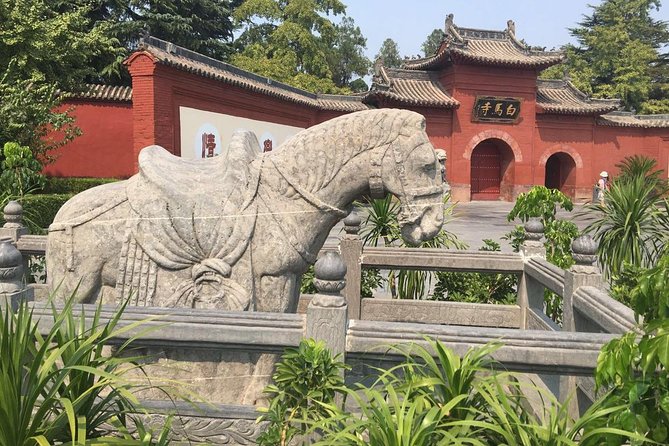
The White Horse Temple (also known as Bai Ma Temple) is located 12 kilometres east of Luoyang, nested between the Luo River and Mang Hill. Build in AD 68 during the Eastern Han Dynasty, it is China’s first Buddhist temple. At that time, the emperor dispatched several monks to India to obtain Buddhist scriptures. The monks returned on a white horse, which is where the White Horse Temple got its name.
This iconic site is home to many “firsts”, including the Qiyun Pagoda – the first ancient pagoda, and the Cool and Clear Terrace which housed the first translation of Buddhist Sutras. Remarkably preserved for over 1,900 years, the temple features English signage to guide visitors through each building’s significance in history. In addition to Chinese temples, there are other Buddhist temples build as gifts from India, Myanmar, and Thailand, making it possible for visitors to see the architectural influences of Buddhism across Asia.
Mingtang and Tiantang Scenic Area

The Mingtang 明堂 (Hall of Enlightenment) and Tiantang 天堂 (Heavenly Hall) are stunning reconstructions of their original sites on Luoyang city’s axis, which used to be where the Tan Dynasty’s imperial complex known as Ziwei City (紫薇城) was located. Mingtang served as the main of Ziwei Palace, where Emperor Gaozong and Empress Wu Zetian established their political and religious affairs including ceremonies, court meetings, celebrations, and scholar selections. Tiantang, a towering royal pagoda, was where Empress Wu Zetian practiced Buddhism. At the present, the tower is decorated with splendid murals, cultural exhibits and exquisite lighting, making it especially enchanting for an evening visit.
The China National Flower Garden

The China National Flower Garden, located along the southern bank of the Luo River, is a must-visit for nature lovers. Spanning 255 acres, it is China’s largest peony park, cleverly designed to blend the beautiful blooming peonies with scenic landscapes inspired by the Sui and Tang Dynasty cultures. The garden housed numerous peony varieties, including the famous “Flower Goddess”, a 100-year-old, 2-meter tall peony. The best time to visit the garden is from April to early May, when the peonies are in full bloom. Visitors can admire the peonies, pavilions, lakes, hills, and other distinctives buildings in the area.

